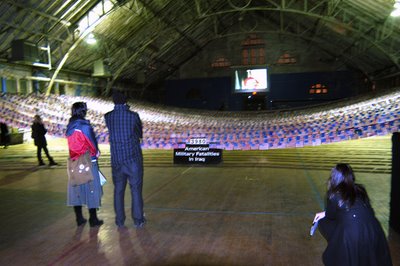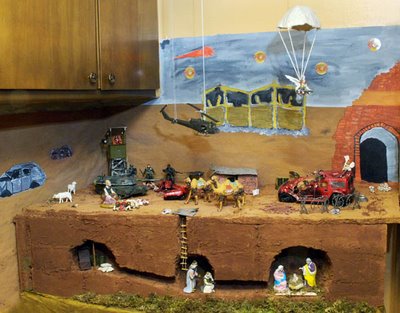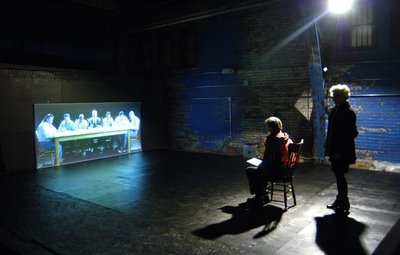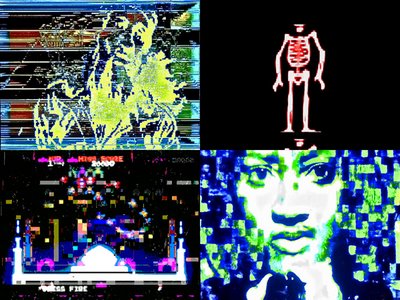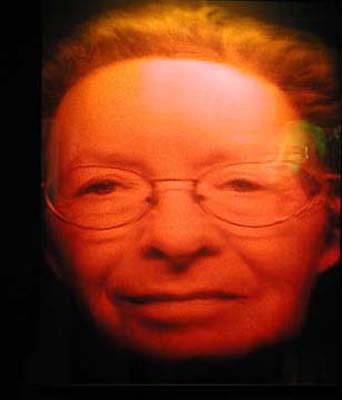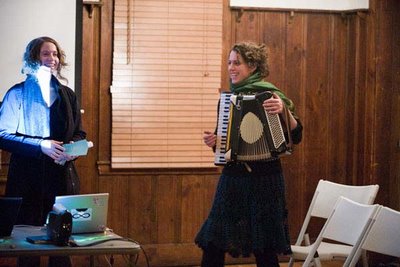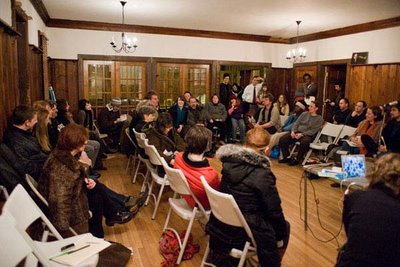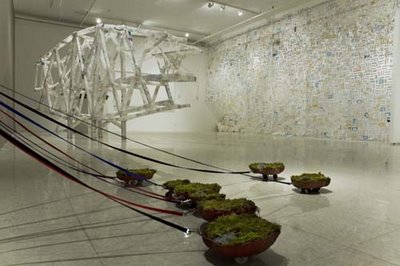Suara Welitoff
Blog-788381.jpg)
Cambridge artist Suara Welitoff, who was featured in last year’s MFA exhibit “War and Discontent” and won the museum’s 2002 Maud Morgan Prize, presents three short looped 2007 videos, based on appropriated footage, in “Anonymous” at Allston Skirt. In one, the camera zooms in on a green uniformed soldier dragging a person across an exposed area which looks like an urban plaza in some war zone. The person could be a wounded comrade or a corpse. Can’t tell.
The subjects in all three works in this “Anonymous” series are simultaneously particular but vague. The first clearly features a solider, but where and when? The scenes are Rorschach tests for viewers to conjure up images from their memories to try to divine the subject and meaning of the works. This one makes me think of an incident during the American invasion of Fallujah in November 2004 in which a platoon of Marines got caught in interlocking enemy fire as they dashed across a street. As reported by the New York Times’ Dexter Filkins and photographed by Marine combat photographer Joel Chaverri (his photos of the incident have mostly disappeared from the Web, but you can see them here and here), when some men went to get the fallen guys they too got hit. A sergeant bled to death.
The video “Untitled (Blue)” shows blue negative (or something like that) footage of police officers, some with batons, marching past a police car. In “Untitled (Double),” a video projection makes a diptych, in black and red, of footage of police and what look like protesters. The officers march on the crowd of people, knocking them down and running them off. One person in the group falls, and seems to be trampled by the fleeing protesters.
War and government suppression of dissent – do I detect current events here? The video loops are all grainy and short, maybe a few minutes in length. And the action plays in slow motion, which pumps up the ominous drama of the videos – and particular moments, like the queasy, tragic seconds when that person slowly, slowly falls.
“Anonymous: Suara Welitoff,” Allston Skirt Gallery, 65 Thayer St., Boston, Feb. 22 to March 29, 2008.
Related: A February interview with Welitoff by FlashArt.
Pictured from top to bottom: Suara Welitoff “Untitled (Blue)” and “Untitled (Double)."
Blog-761609.jpg)





